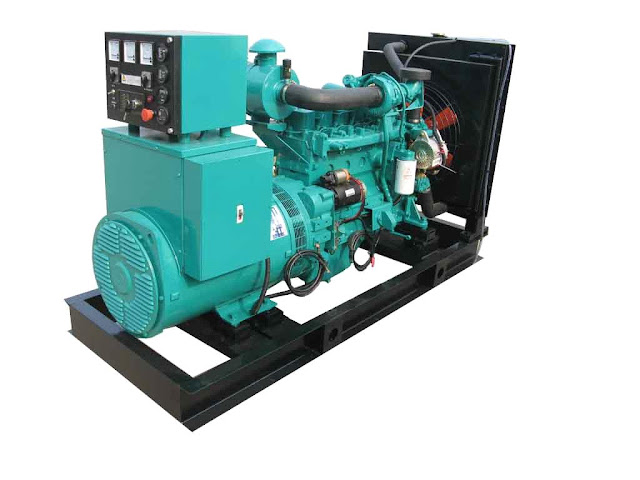Working Principle of Diesel Generators
How a Diesel Generator Works?
A diesel generator is the combination of a diesel engine and an alternator or electric generator to generate electrical energy. Here the alternator is the generator which generates the electric power and engine is used to rotate the electric generator. Diesel generators are mostly used as an emergency power supply.
Working Principle
- Diesel Generator works in four cycles:
- Suction/Intake
- Compression
- Power
- Exhaust
The working principle of a diesel generator is based on the law of Energy conversion i.e. “Energy can neither be created nor be destroyed but be only converted from one form to another form.” Since diesel has chemical energy, during combustion the chemical energy is converted into heat and force. This force is known as mechanical energy which helps in rotating the alternator. The combustion process in a diesel engine is commenced by spontaneous ignition of the fuel when it is injected into a highly compressed charge of air which has reached approx. 750 degrees Celsius.
 |
| Diesel Generators For Sale |
Here the piston moves down from the top dead centre due to which the inlet valve opens, and the air is drawn into the cylinder. After drawing enough air with pressure, the suction valve gets closed at the end of the stroke.
2. Compression Stroke
During this stroke, the piston moves upwards from the bottom dead centre. The air drawn into the cylinder gets trapped inside the cylinder and compressed because of the upward movement of the piston. In diesel generators, since the compression ratio used is very high, the air is compressed to a very high pressure, up to 40kg/cm squared. The temperature of the air is very high at this pressure which is enough to ignite the fuel.
3. Power Stroke
The fuel is injected into the hot compressed air and it starts burning and maintains the pressure. When the piston reaches the top dead centre the supply of fuel turns off. The injection of the fuel at the end of compression stroke continues till the cut-off point. Both the inlet and exhaust valve remain closed and the hot gases and compressed air now expand in the cylinder which causes the piston to move down and it finally reaches the bottom dead center.
4 . Exhaust Stroke
During this stroke, the piston again moves upward, and the exhaust valve opens. The inlet and fuel valve are closed. Most of the burnt fuel gases escape due to their own expansion. The remaining gases are pushed out by the upward movement of the piston through the exhaust valve. At the end of this stroke, the exhaust valve closes, and the cycle is completed.
A. Diesel Generator Parts
The following are the main components of a Diesel Generator:
· Engine
· Alternator
· Fuel System
· Governor
· Voltage Regulator
· Cooling and Exhaust Systems
· Lubrication System
· Flywheel
· Control Panel.
Now you understood the workings of a diesel generator. Modern Diesel Generators are well set up with high specifications and come in various models. There are many companies which offer highly efficient Diesel generators for sale in the UK. We at Eagle Generators provide you with high-quality diesel generators at an affordable price.
If you are looking to purchase a new or used diesel generator take a look at our stock here:
If you don’t see what you are looking for or need some advice do not hesitate to contact us:
Call: +44 121 557 0270 or Email: sales@kw1.com


Comments
Post a Comment